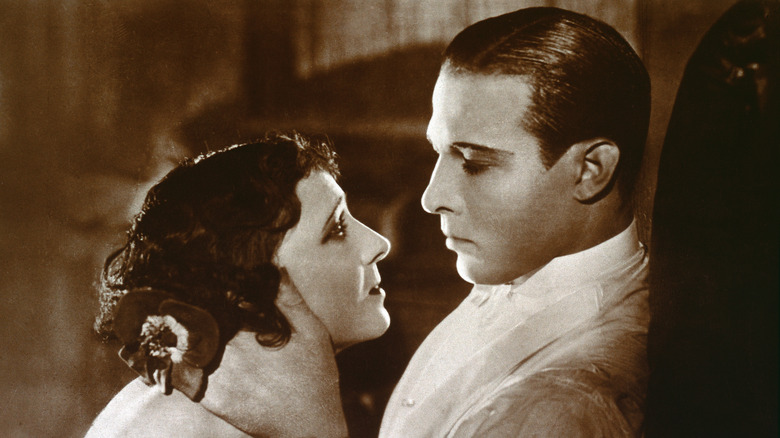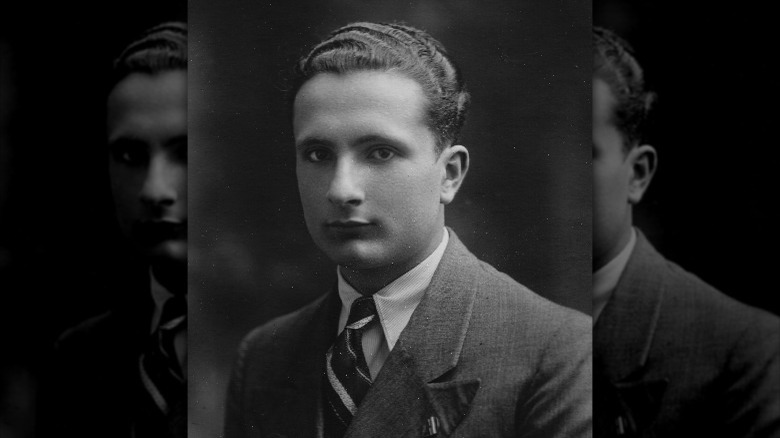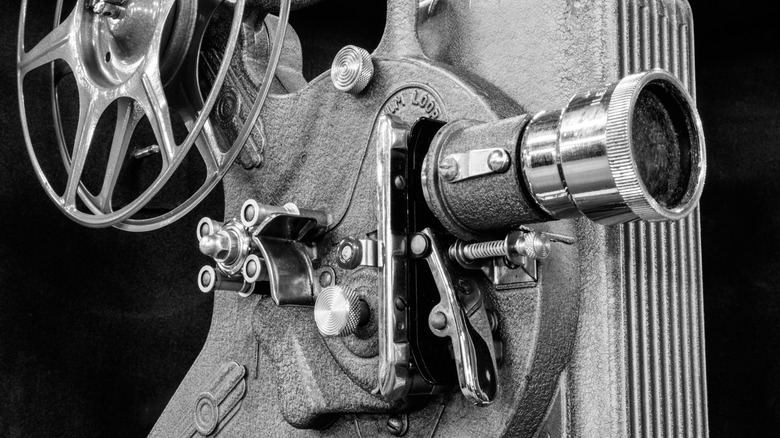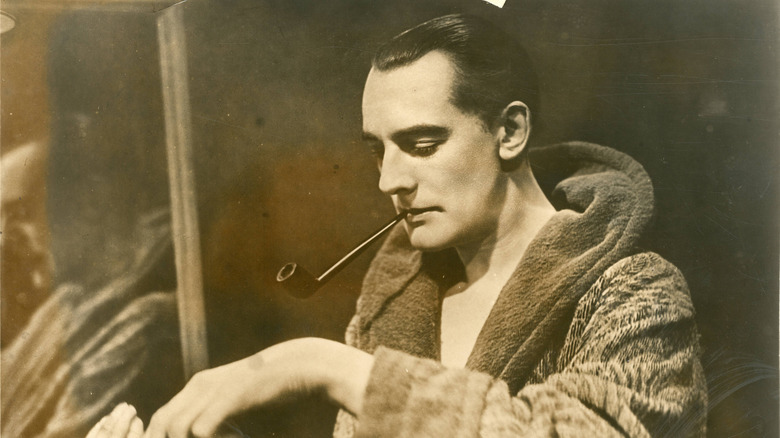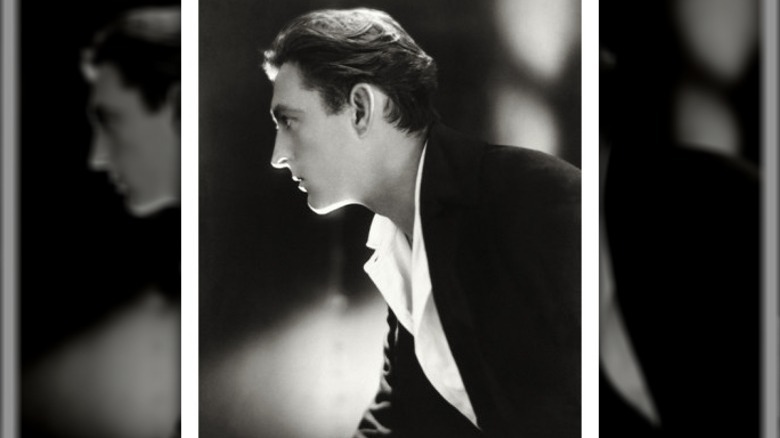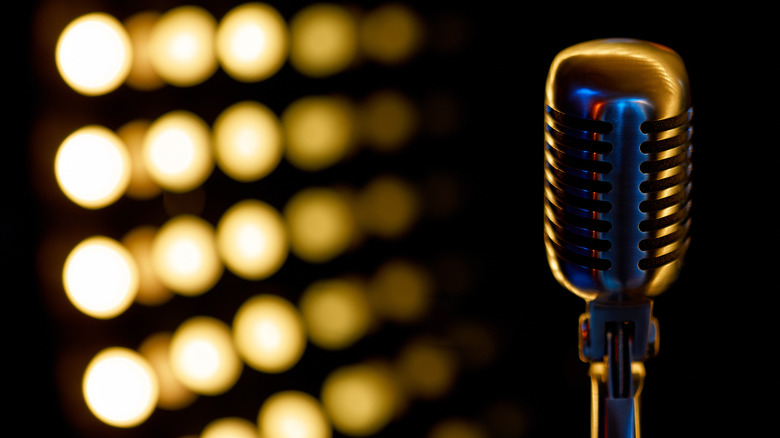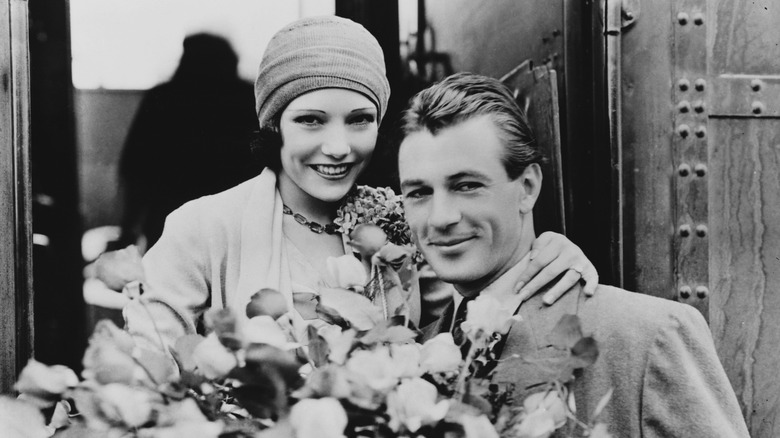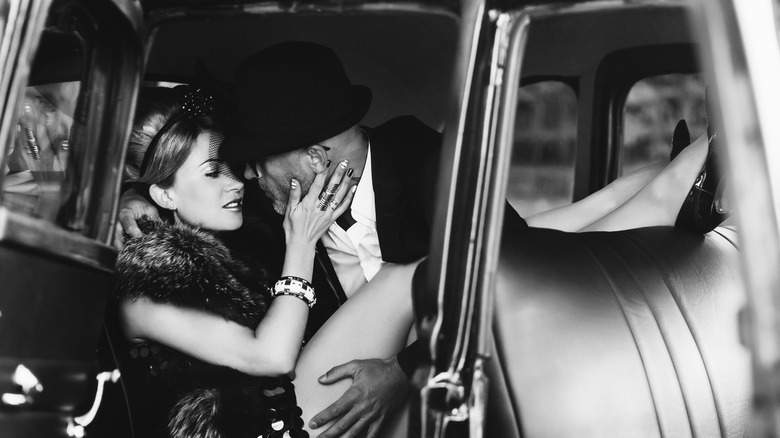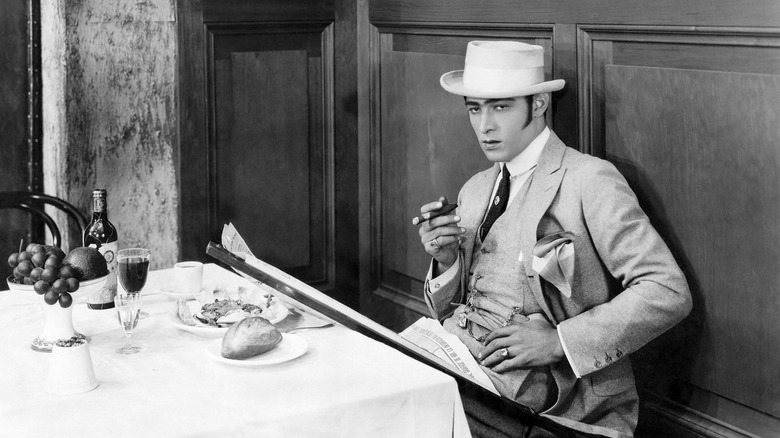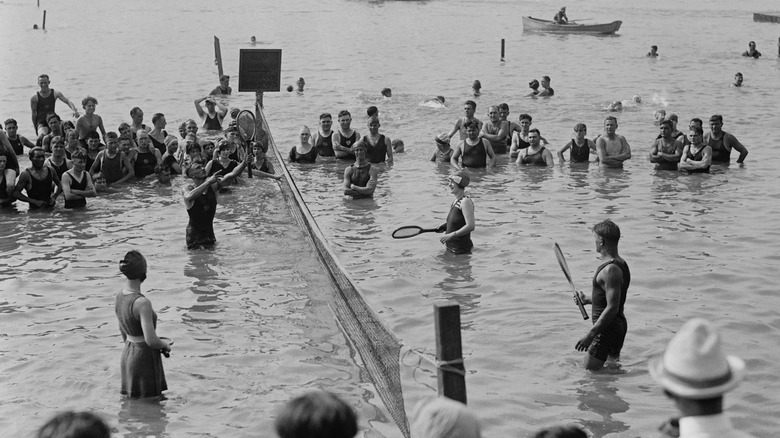Surprising Things Women Found Attractive 100 Years Ago
When you think about the 1920s, what's the image that comes to mind? Maybe flappers and their now-iconic aesthetic, with short dresses and bobbed hair. Perhaps it's the secretive world of Prohibition, with speakeasies, bootleggers, and illegal smuggling operations playing cat and mouse with the authorities. Or maybe it's the gilded extravagance you'd expect of the Roaring Twenties, all booze, parties, and dancing — replete with scenes straight out of "The Great Gatsby."
And none of that would be incorrect; after all, the media does love to latch onto the fashion sensibilities so closely tied to the flapper era. With that in mind, though, it's clear that there's quite the lasting obsession with female fashions of the era. Nonetheless, men had their own standards that they tried to abide by, all affected by societal standards particular to the times.
Of course, you can attribute the specifics of male standards of beauty to the good old proverb, "Out with the old and in with the new" — and the end of World War 1 incited a sense of rebelliousness in young people of the day, a desire to let go of old beliefs. But there were more than naturally shifting tastes at play as the last dregs of 19th-century Victorian ideals died out and new ones took center stage. The messed-up events from World War 1, the rise of new technologies, and the rising prominence of Hollywood all played their parts in determining just what made men attractive 100 years ago.
Clean-shaven faces
If you think back to all those stoic portraits of men from the mid-19th century, you might find that a lot of them sported some pretty impressive facial hair. Bushy beards, huge sideburns, the famous (or, perhaps, infamous) look of mutton chops — they were a common sight due to a combination of practicality and their association with soldiers. But as the century wore on, the fad began to die off, and for a number of reasons. By the end of the century, lots of facial hair was seen as unhygienic, but the 20th century brought two more specific problems for beards.
On one hand, razors became a lot safer to use. Gone were the dangerous straight razors of the past, which could leave nasty cuts if used improperly, and instead came the era of the safety razor. And in tandem with that was the advent of World War 1. The introduction of chemical warfare during that terrible conflict made gas masks a necessity, and they would not work well with a beard underneath. As a result, the U.S. military required that men be clean-shaven, even providing them with the new safety razors — a habit those men grew accustomed to and brought back home.
And the results are evident when you take a look at young men photographed in the 1920s. Many of them — Hollywood movie stars, included — sport no facial hair at all, though there was some room for variety. After all, it wasn't necessarily uncommon to find those who opted for thin, well-kept mustaches.
Hollywood promoted leaner builds
As the aphorism goes, "The camera adds 10 pounds." Well, that's a notion that really started to gain traction back in the 1920s (in other words, you can sort of blame old Hollywood for all those problematic views equating thinness with beauty that exist today). So, technically, in this particular regard, the 1920s weren't all that different from today; that said, the interest in leaner body times might have been surprising for the time.
It just so happens that throughout history, the standard of beauty (for both men and women) was very different pretty much until the early 1900s. Thinness wasn't seen as beautiful. On the contrary, heavier, plumper bodies were often viewed as beautiful — a sign not only of wealth, prosperity, and youth, but also often associated with morality.
In the U.S., these opinions were in flux as the 19th century came to a close, spurred by growing anti-immigrant sentiments. One major innovation — motion pictures — set the slimness trend on a permanent path, and by the 1920s was it greatly amplified, with Hollywood leading the charge. Actors' bodies were constantly on display in front of the cameras, which did appear to artificially add weight to those on screen. Acting was also physically demanding, with potentially long days on set, running through many takes of scenes that could involve strenuous activity such as horse-riding, running, and various stunts. Young, fit bodies were just better able to handle that. And then from there, well, it's not hard to see why thinner bodies became the ideal. Hollywood is Hollywood, and society at large had reason to emulate the looks of their favorite movie stars.
Slicked-back hair
Hairstyles are one of those things that can define the look of a decade. After all, what would the 1980s be without the mullet? Or there's the 1950s and the pompadour. Or the 1990s and the abundance of frosted tips and shaggy middle parts. In much the same way, the 1920s gave birth to its own iconic set of hairstyles.
For the most part, most men favored neatly slicking their hair back, away from their face, keeping it oiled down and parted down the middle (or just slightly off to one side). It was kept just long enough to achieve that neat look, but wasn't allowed to get any longer; otherwise, it would start falling down onto the neck, a fashion faux pas for the time. What's more, this particular trend meant that it was easy for men to try on fashionable hats without making a mess of their hairdo — not a bad plus.
Still, it's worth mentioning that not all hair could easily conform to this look. Straight hair could, but curls made the 1920s look a bit more difficult to pull off. But men without straight hair could still participate in popular fashion trends. A little bit of tamed waviness was perfectly acceptable, so long as oil-based products like Brilliantine were added into the mix, both keeping curly hair manageable while also adding a bit of shine.
Keeping up with the latest fashion trends
To a casual observer, the height of male fashion during the 1920s isn't all too different from what you'd see out and about today. A little formal, perhaps, but it was a pretty notable departure from the trends that had come before.
If you took a look at clothing ads up through the 1910s, you'd find some very serious, relatively dour scenes: men in formal wear at their places of work. As for the wardrobe pieces that they'd sport, you'd be pretty likely to find long, heavy coats, or other designs that largely borrowed from European models: things like tight vests and starched collars, for example.
But once the 1920s rolled around, the overall view of fashion began to change. Per Daniel Delis Hill in "American Menswear" (via Saturday Evening Post), "The power look of the bulky, over-padded clothing of the Edwardian era was abandoned in favor of the slim silhouette of the lithe young man ... Natural shoulder lines emphasized a feline agility rather than brawn." Shorter, lighter coats evoked a feeling of youth and vigor, as did ditching formal vests and purchasing shirts made of more comfortable materials. Which all happened to go along with advertising trends (and social norms) at the time: enjoying life, leisure, and recreation, rather than holding to more stifling conventions of the past.
A beautiful voice
While Hollywood was a pretty big factor in determining standards of beauty in the 1920s, there's another fairly big medium that has to be taken into consideration: radio. The invention made its way into popular usage largely as a result of its heavy use during World War 1. But once the technology started making its way into more homes, it was also matched by improvements in other, related technologies, such as microphones. Between the two, music was no longer an elitist form of entertainment; it could be enjoyed by everyone. And in turn, that created more of a focus on peoples' voices, rather than just their looks.
One particular type of singer that really came into their own in the 1920s was called the "Crooner" — typically a male vocalist known for their soft, subtle tones. The style hadn't been possible until that point, since microphones had only just become sensitive enough to pick up and amplify such quiet sounds, and technological improvements allowed the performer to be physically closer to the microphone while singing, essentially whispering their words.
The soft tone made the performance feel even more intimate — even verging on somewhat romantic — between the singer and their audience, almost like two lovers were holding each other close and whispering affectionate words into each others' ears. Add to that the fact that many of the Crooners' songs had romantic undertones (or explicitly were about romance), and it's almost no surprise that people were mesmerized.
Personality over status
In the modern day and age, couples rarely get married immediately. There's the whole ordeal of dating and figuring out if two people are really a match. But if you know a bit about history, then you'd know that arranged marriages were a much more common phenomenon. As it turns out, that switch came about in the 1920s, albeit there was perhaps a less healthy view of dating than there is today.
When society at large made the switch over to dating from old-school courtship, men didn't really know what to do with themselves. In the past, they could largely just let their family reputation speak for them, for the most part, and that alone would secure them a partner. But as the old ways fell away, they discovered that status meant relatively little, and their potential partners cared more about their personalities, the things that they could do as a couple. A new concept for the time, even if it's much more familiar to the modern day.
All that said, dating is understood in slightly different terms today than it was then. "Personality" was often taken to mean more of a performance, an act, even, and the idea that dating was purely performative also turned it into something of a manipulative competition. Not only did men feel like they were competing against each other, but also competing with their potential partners, putting on facades of indifference to hold power over the relationship.
Heartily embracing sexual freedom
The Victorian era is hardly one that most people associate with sexual freedom. It's no real stretch to say that stoicism and etiquette were the norm as the 19th century came to a close and the 20th century began, but the 1920s were where the change really came. Though it's a familiar concept today, at the time, the idea that love was about passion rather than formal affairs was a rather new line of thinking.
Youth culture at the time embraced rebellion, and when it came to romance, that also often meant embracing casual shows of affection and a much looser relationship with things like pre-marital sex. "Petting parties" became something of a symbol of high-school and college life for many students, chances for young people to make out without judgment from their peers, with their activities sometimes even spilling into public places.
Of course, older folks were scandalized, but it turned out that was part of the point. It was a statement, a way to fully reject older social norms — which also meant that these kinds of gatherings and displays actually died down over time. Sure, in the present day, it'd be no surprise to see a couple getting close in public, but back in the 1920s, these were more performative, and intentionally so. There was a statement to be made then that doesn't need to be made now, and that influenced exactly how young people chose to experience intimacy.
Latin Lovers
Media has come a pretty long way in the last century, especially when it comes to sensitivity when writing fictional characters from minority backgrounds. (Granted, this is a discussion that's constantly evolving.) The 1920s were a different question, though, given it apparently created the trope of the "Latin Lover."
The most well-known actor to fall into this trope was Rudolph Valentino, a handsome Italian man who found work in Hollywood due to his so-called "exotic" looks. His star really rose with his leading role in the 1921 film "The Sheik," in which he portrayed an Arab — something that definitely wouldn't fly today. But given this was the 1920s, people fawned over not only the role he played, but also his own scandalous stories of Old Hollywood; taken together, he became something of a troubled romantic in the eyes of fans.
Valentino wasn't Hollywood's only Latin Lover in the 1920s, however, with a number of other white actors being cast as characters of color. And with great effect, since as the trope became more widespread, so too did the desire to romanticize people for their ethnic backgrounds — a fascination with exoticism that was superficial at best. The Latin Lover as a trope continued to lean into that romanticism, seducing their audiences with a leading man who was dangerous and controlling but still passionate, different enough to be interesting but not so different as to be uncomfortable. Deeply problematic as all of that is now, it certainly made for a few heartthrobs a century ago.
Youth and athleticism (and suntans!)
The 1920s are many things in many different peoples' minds, whether that be what it was really like to be a flapper, or the illegal bootlegging of Prohibition. But the 1920s was also another thing: a golden era for American sports.
As it turns out, this particular trend likely came from the larger trend that dominated the decade: the obsession with the idea of youth. After all, sports have been around for a very long time — way before the 20th century — but they'd always been linked with childhood. That made them a weirdly perfect fit for the 1920s; they were a way to continue celebrating youth, tying it to accomplishment and ability, while still giving people something familiar to latch onto. That made athletes the perfect role model for almost anyone. They could be seen as symbols of health, vigor, and beauty, as well as paragons of virtue, purity, and hard work. Pretty much any positive trait could be mapped onto those with athletic prowess.
Weirdly enough, the interest in athleticism also brought about a different craze that's familiar to people today, even if they may not know that it originated in the 1920s: suntanned skin. As normal people took to sports, by the late 1920s, they found themselves tanning from spending time outside. That darker skin tone became associated with health and youth, which drew more people toward swimming, just because that was an opportunity to get a natural tan, themselves. By the 1930s, the desire for tanned skin had developed into the fad that's still around today.
